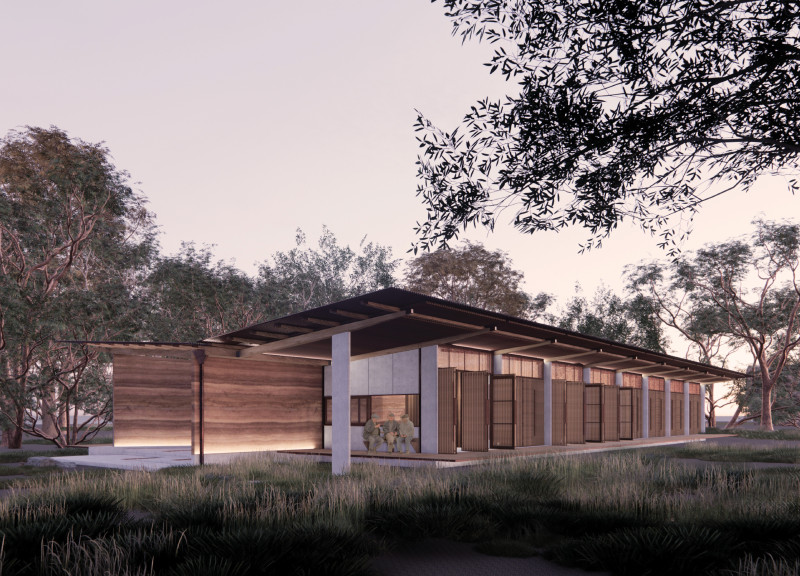5 key facts about this project
The design concept is rooted in the principles of sustainability and responsiveness to the local context. By utilizing locally sourced materials, the project emphasizes its connection to the surrounding landscape, minimizing environmental impact while supporting the local economy. Key materials such as timber, concrete, and glass are used judiciously to create a balanced dialogue between durability and aesthetic appeal. The choice of materials reinforces the project's commitment to sustainability, as they are not only integral to the design but also contribute to the overall warmth and character of the space.
One of the most significant aspects of the project is its layout and spatial organization. The design embraces an open-plan approach that promotes natural light and ventilation, key elements that enhance the living experience. Large windows and strategically placed openings create a seamless transition between indoor and outdoor environments, inviting nature into the daily lives of the occupants. Additionally, the thoughtful placement of communal spaces encourages social interaction, with areas designed for gatherings and leisure positioned to maximize comfort and accessibility.
The façade of the building showcases a contemporary approach, marrying functionality with visual interest. A harmonious interplay of textures and materials creates a dynamic exterior that changes throughout the day as light conditions shift. This variability in appearance is further enhanced by the careful detailing of architectural features, such as overhangs and terraces, which provide shade and foster a layered visual experience.
Unique design approaches include the incorporation of green technologies that enhance the building's sustainability without compromising aesthetic qualities. Solar panels and rainwater harvesting systems are integrated into the design, allowing the structure to operate with an increased level of energy efficiency. These features are not merely functional; they are carefully considered elements of the architectural composition, seamlessly woven into the overall design narrative.
In terms of landscape architecture, the project takes into account the ecological characteristics of the site, employing native plant species and sustainable landscaping practices that harmonize with the natural environment. The outdoor spaces are designed not only for recreational use but also to reflect the architectural language of the building itself. Pathways, seating areas, and gardens provide inviting spaces for residents, encouraging a deeper connection with nature and fostering community engagement.
Overall, this architectural project stands as a testament to thoughtful design that prioritizes sustainability, community, and the importance of place. Its success lies in its ability to provide a comfortable living environment while maintaining a respectful dialogue with its surroundings. For architects, designers, and enthusiasts eager to delve deeper into the specifics of this project, exploration of the architectural plans, sections, designs, and ideas will yield valuable insights into its innovative designs and comprehensive approach. This project not only represents a place for living but also serves as an example of how thoughtful architecture can enhance the quality of life for its residents and the surrounding community.


 Claudia June Takada
Claudia June Takada 




















